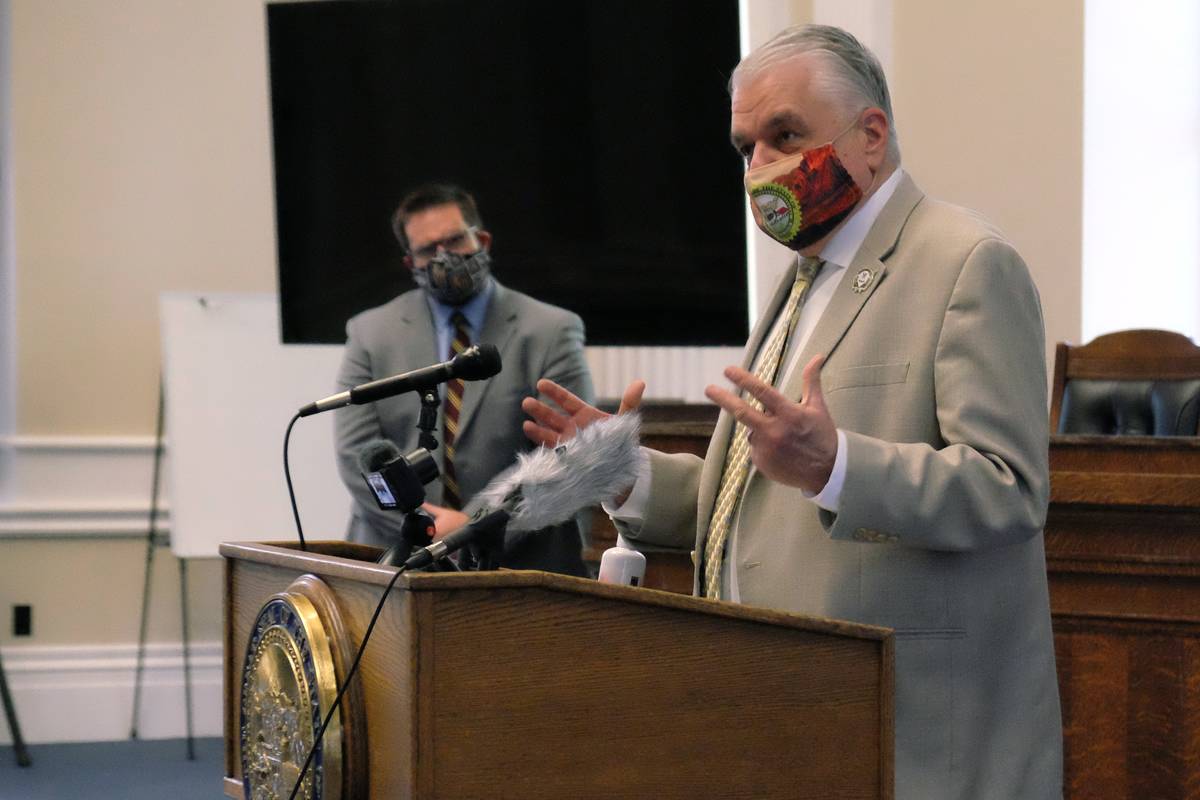Sisolak: State may identify ‘egregious’ COVID cluster locations
Gov. Steve Sisolak said state health officials might identify businesses that appear linked to COVID-19 clusters, but gave no timeline on when such data would be made public.
“If we find a business that is particularly egregious and has a high propensity of cases, that’s certainly something we could look into releasing,” Sisolak said during a news conference Monday.
This month, state officials began analyzing county-level disease investigation data to identify the types of businesses and specific locations that infected residents may have been exposed to the coronavirus at. The Review-Journal has requested copies of the analyses from multiple government agencies. None had provided it as of Monday afternoon.
While officials in other states have determined exact events and businesses that have generated large clusters of cases, Nevada officials have generally referenced “backyard barbecues” and “family gatherings” as primary causes of new infections. Officials here have yet to publicly identify any specific spreading events or case clusters beyond those at nursing homes and other state-licensed facilities.
Sisolak underscored that his goal was to “keep as many sections of our economy open as possible” while taking an aggressive and targeted approach to curbing the spread of the coronavirus. He cautioned against drawing any hard conclusions from the new data analyses, because they did not pinpoint where disease transmission occurred.
“Someone will give you five, six, 10, 20 places where they’ve visited and they might have contracted the disease, but they can’t specify the one place that it certainly is,” he said. “We have to be very careful to make sure that businesses are not harmed by ‘half information,’ so to speak, being put out there.”
COVID-19 had killed at least 1,200 Nevadans and infected more than 66,000 as of Monday. State health officials have named it one of Nevada’s leading causes of deaths.
Professor Samuel Scarpino, head of Northeastern University’s Emergent Epidemics Lab, said it will be difficult for state and county officials to decide on which kinds of businesses and gatherings to impose tighter restrictions on until they can better determine where transmission is occurring.
“Reading between the lines, it sounds like they don’t know where the cases are coming from, and that means the contact tracing is not working,” he said. “If you’re talking to someone and they don’t know where they got infected, and you can’t connect the chain of transmission. That means the transmission is out of control.”
The state has not released the data analyses because officials are further vetting them, Nevada Department of Health and Human Services deputy administrator Julia Peek said Monday. That includes comparing the data analysis to businesses that have violated COVID-19-related health and safety guidelines.
Scarpino said there is value in publishing data on possible exposure sites, especially if one particular business has seen a relatively large number of infected people. However, he agreed that the information has shortcomings.
“You’re going to have lots of businesses show up on this list because lots of people go to them, not necessarily because those are the high-risk transmission places,” he said.
Scarpino praised state officials for launching an app, named COVID Trace, to bolster contact tracing. Users of the app are notified if another user who was recently near them tests positive for COVID-19.
Peek encouraged all residents and visitors to the state to download COVID Trace. She pledged it would keep users’ identifying information confidential.
“The more people we get the more effective the app will be,” she said.
Contact Michael Scott Davidson at sdavidson@reviewjournal.com or 702-477-3861. Follow @davidsonlvrj on Twitter. Review-Journal staff writer Mary Hynes contributed to this report.


















































